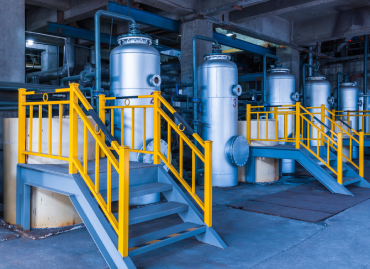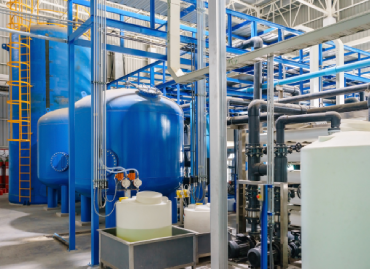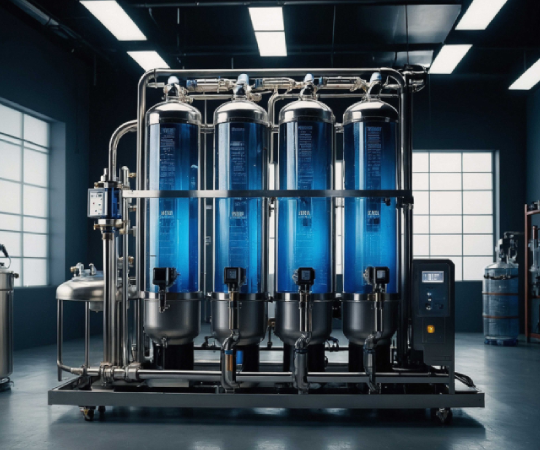- By Admin
- 16 Sep 2025
- ETP Plant
Comprehensive Treatment Technologies for Cleaner, Greener, and Sustainable Leather Industry Operations
India stands tall as one of the world's leading producers and exporters of leather and leather goods. With clusters of tanneries spread across Tamil Nadu, Uttar Pradesh, and Maharashtra, the industry supports millions of livelihoods, particularly in semi-urban and rural regions.
Maharashtra, with its blend of traditional and modern units in Mumbai, Solapur, and Kolhapur, remains an important hub for both domestic markets and international exports. However, this growth comes at an environmental cost, as the industry consumes massive volumes of water and generates significant amounts of chemically laden wastewater.
"Water is not just a resource but the very essence of life and industry. In leather manufacturing, it carries both opportunity and responsibility. By treating every drop with care and innovation, industries can protect nature, comply with regulations, and secure a sustainable future for generations to come."
Water Consumption in Leather Processing
Leather manufacturing is a water-intensive sector where nearly every stage demands substantial quantities of clean water. From the initial soaking of raw hides to liming, tanning, dyeing, and finishing, water acts as both a medium and a chemical carrier. It dissolves agents, regulates temperature, and washes away residues to ensure the quality of the final leather product. Even auxiliary systems such as boilers and cooling towers depend heavily on water. The sheer volume required, combined with the sensitivity of leather quality to water purity, makes efficient water use and reliable treatment essential for sustainable operations.


Environmental Challenges of Wastewater
While water drives production, it simultaneously becomes the source of one of the industry's gravest concerns—wastewater discharge. At different stages, the effluent composition varies, but its toxic load remains a constant threat. Soaking and liming release suspended solids and organic matter, while unhairing and delimiting add sulfides and ammonia.
Tanning introduces heavy metals such as chromium, and post-tanning processes, such as dyeing, release salts, surfactants, and synthetic dyes. These effluents carry high Chemical Oxygen Demand (COD) and Biological Oxygen Demand (BOD), making them difficult to treat with conventional methods. Without proper treatment, this wastewater contaminates groundwater, damages soil fertility, and poses risks to aquatic ecosystems.
Conventional Treatment Approaches
To tackle these challenges, leather industries have long relied on Effluent Treatment Plants (ETPs). These facilities employ a combination of physical, chemical, and biological processes to neutralize pollutants. Neutralization stabilizes pH levels, coagulation removes suspended particles, and chrome recovery units recycle tanning agents to reduce waste.
Biological treatment processes, both aerobic and anaerobic, reduce organic load, while tertiary methods such as sand filtration or activated carbon ensure further purification. Although these systems provide a strong foundation, stricter environmental regulations and increasing ecological awareness demand more advanced and efficient treatment technologies.
Modern Technologies for Sustainable Water Management
The industry's transition toward advanced water technologies represents a major step forward. Reverse Osmosis (RO) helps recover purified water from treated effluent, easing reliance on freshwater. Membrane Bioreactor (MBR) technology combines biological processes with membrane filtration, producing effluent with high clarity and reliability.
Zero Liquid Discharge (ZLD) systems ensure that every drop of wastewater is recovered, reused, and recycled, eliminating discharge. Chrome recovery systems, sludge management, and SCADA-based monitoring systems further enhance efficiency, minimize risks, and promote sustainable practices. These innovations not only safeguard the environment but also lower operational costs and improve compliance with global trade requirements.
Customized Treatment Solutions for the Leather Industries
Konark WaterDoc, a division of the Konark Group, specializes in offering tailored solutions for the leather industry's wastewater management. With expertise in designing and implementing STP, ETP, WTP, WWTP, RO, and ZLD systems, the company addresses the unique challenges posed by tannery effluents.
From site assessment and water quality testing to automation and chrome recovery integration, Konark WaterDoc delivers turnkey systems that help industries meet both regulatory and environmental standards. By ensuring long-term sustainability, cost-effectiveness, and resource conservation, these customized solutions empower leather manufacturers to thrive globally without compromising ecological responsibility.
Summary And Conclusion
The leather industry is one of India's most vital sectors, but also one of the most water-intensive and environmentally challenging. From chromium-heavy discharges to dye-rich effluents, untreated wastewater poses severe ecological and social risks. Advanced treatment systems such as RO, MBR, and ZLD, supported by chrome recovery and automated monitoring, provide comprehensive solutions. Konark WaterDoc, with its proven expertise, offers custom-designed systems that help leather manufacturers achieve sustainability, regulatory compliance, and long-term resilience. By investing in effective water and wastewater management, the leather industry can safeguard its future, strengthen its global presence, and contribute responsibly to environmental preservation.































































